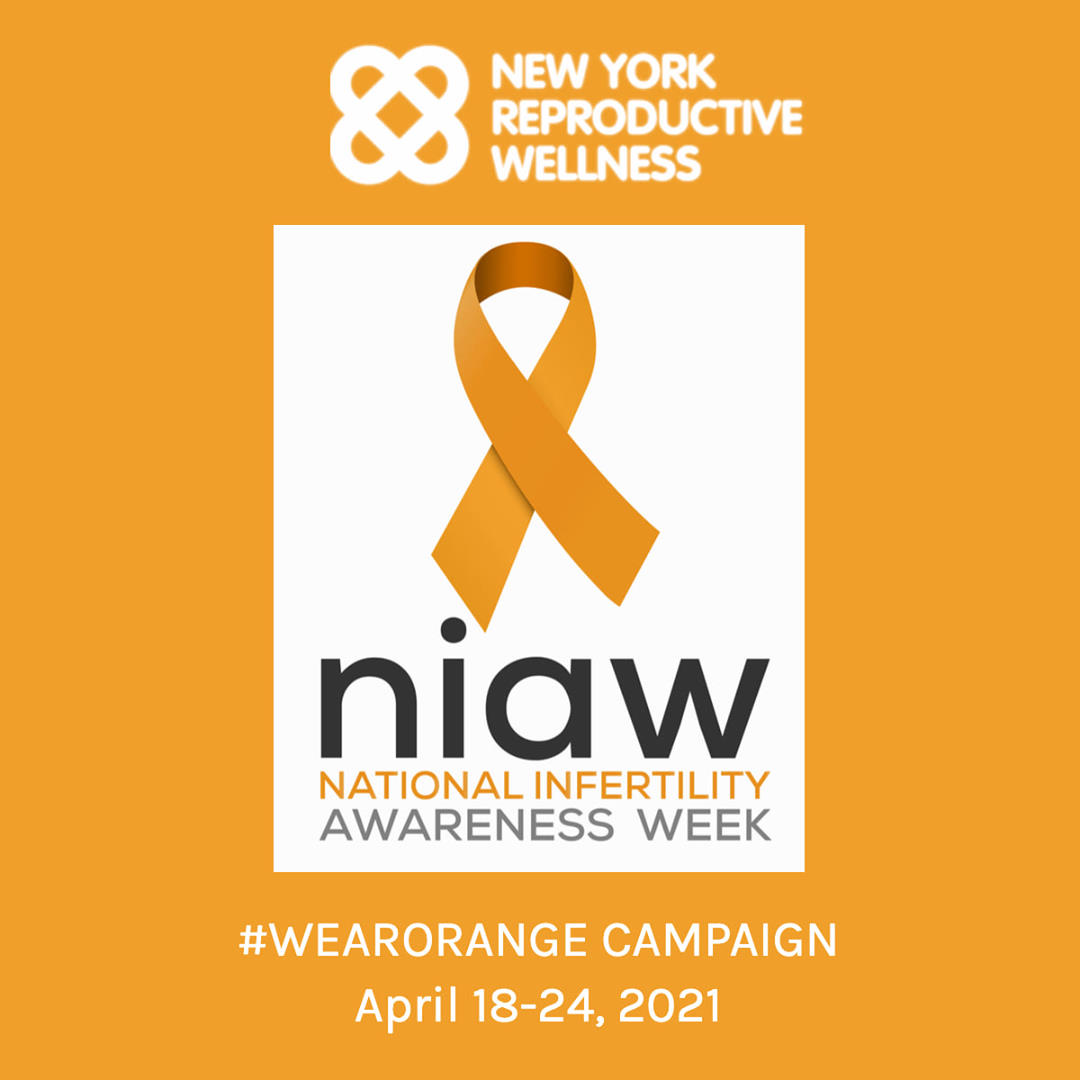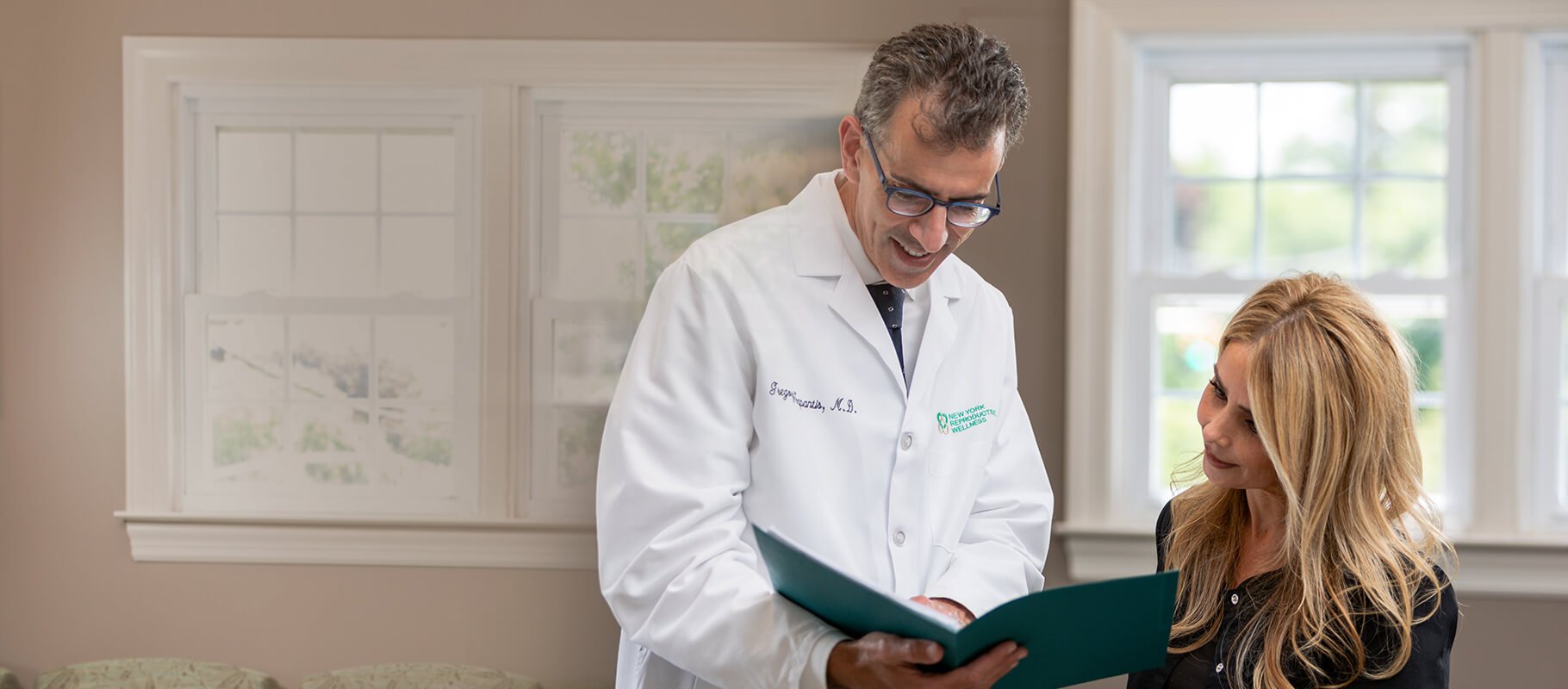Infertility Q&A with Long Island's own Dr. Zapantis

When you come to New York Reproductive Wellness here on Long Island, you'll see Dr. Gregory Zapantis, who has been a Reproductive Endocrinology and Infertility (REI) specialist for two decades.
Get to know Dr. Zapantis, and his fertility philosophy, in this Q+A for National Infertility Awareness Week April 18-24th!.
Q: What are the leading causes of infertility for men and women?
Dr. Z: For women, it’s age, followed by Polycystic Ovary Syndrome (PCOS) and endometriosis. For men, it’s sperm issues, whether that’s sperm count (how many sperm), sperm motility (how well they swim), or sperm morphology (how they are shaped). And the other fairly common one is unexplained infertility, which is when I don’t find anything obvious - semen parameters are normal, ovulatory status is normal, egg reserve testing is normal, fallopian tubes are open and yet conception is not happening. For conditions such as PCOS and unexplained infertility especially, we see a lot of success with IVF.
Q: Why is early infertility awareness important?
Dr. Z: Despite the internet and peoples’ ability to research topics in depth and increasing awareness of declining egg quality with increasing female age, which has led to a spike in egg freezing, or fertility preservation, I think there is still not enough awareness about the decreasing chances of pregnancy with advanced reproductive age. You can find the odd 40-some year old woman who can conceive naturally, but for the most part, this is not common.
My mother has often remarked to me about a family friend who had a child naturally at 46, but that’s very rare. In a woman’s mid 30s, fertility begins to decrease more rapidly, and it’s unfair not to discuss the possibility of that. Now, that’s not to panic women into fear or having children early, and it’s not meant to be patronizing; it’s just important to educate women and couples of the potential risks in delaying either fertility preservation or attempts at conception. And observing NIAW is an opportunity to highlight that.
Q: How big a role does the age of the woman play in infertility?
Dr. Z: A potentially large role. Women and men both suffer from infertility fairly equally, but with women, the infertility more commonly is a result of advanced reproductive age. This is not the case with men because they are constantly producing fresh sperm and age usually may become an issue in their 50s and beyond, when abnormal sperm can cause chromosomal or genetic problems in embryos.
Women, on the other hand, are born with all the eggs they will ever have over the course of their lives, and that’s about two million eggs at birth. By her first period, a girl’s egg reserve drops to half a million eggs, and over the course of her reproductive life, she loses about 500 eggs that ovulate and approximately another 499,500 that wither away but are not ovulated. This happens because every month, a batch of follicles containing eggs begin to develop, but only one will grow mature enough to ovulate – the rest will resorb in a process called atresia.
If you’re thinking that’s unfair, you’re right – it’s a very inefficient process, and one that results in the loss of thousands and thousands of good quality eggs that never ovulate. With a loss of eggs comes a loss of egg quality, so as a woman ages, not only does she have fewer eggs, but a higher percentage of her remaining eggs are abnormal, and will most likely either fail to fertilize, fail to implant in the uterus, or result in a miscarriage, making a sustained pregnancy difficult.
The first signs of a drop in fertility for women begins as early as the late 20s, progressively more so in the mid-30s, and the next significant one is at 37 years old, with a loss every year afterward.
Q: How does In Vitro Fertilization (IVF) help?
Dr. Z: Well, that’s the beauty of IVF – it tries to make nature a little more efficient by salvaging all those egg-containing follicles that are lost to atresia in any given cycle. The whole point is to salvage those eggs and have them grow in unison with the dominant egg the body would have ovulated naturally. Once all the eggs in that batch are as mature as they will get (thanks to hormones patients take), we gently aspirate those eggs from the woman’s ovaries and fertilize them in hopes they all make embryos. The higher the egg count upwards of about 20-25, the higher the likelihood of embryos that develop to the blastocyst stage, which in turn increases the number of normal embryos a patient or couple can make. Due to this ‘get every egg’ nature of IVF, the treatment has the highest pregnancy success rates of all fertility treatments.
Q: What are balanced or unbalanced embryos?
Dr. Z: As I mentioned above, the older a woman, the older her eggs, and the higher the chances those eggs will make abnormal embryos that will fail to result in a pregnancy or lead to miscarriage. Those are the real world effects of abnormal embryos.
Scientifically, abnormal embryos are ones that are not chromosomally balanced, meaning they have either too few or too many chromosomes, and have poor reproductive potential. Research has shown that for women under 35 years old, about 60 per cent of the embryos they make are normal, about 50 per cent are normal for women aged 35-37, about 40 normal for women 38-40, and by the time a woman is 41-42, only 20 per cent of the embryos she will make are normal.
So when I treat patients that are 35 and over, I respectfully offer patients a test called Preimplantation Genetic Testing for Aneuploidy (PGT-A), which tells me which embryos are normal and abnormal, so I can transfer only normal embryos and save that patient time, money and stress. By the way, for those wondering, research has shown that the PGT-A test (which requires a biopsy of the embryo), has no effect on pregnancy rates, meaning it’s not harmful.
Q: What about IUI? Does it work?
Dr. Z: The short answer is yes. I like to offer individualized treatment, so if it’s appropriate to offer Intrauterine Insemination (IUI), where washed sperm is inserted with a catheter into a woman’s uterus at the time of ovulation, I do offer it, because it does work. It’s especially useful in mild cases of infertility, where the main issue is related to ovulation or sperm motility, but it can also be effective for cases of mild endometriosis and unexplained infertility.
In all those cases, offering an oral ovulation induction medication like Letrozole will stimulate female ovulation (of 2-3 eggs), and placing the sperm inside the uterus at the onset will limit the distance those sperm need to swim to meet that egg, increasing the likelihood of pregnancy. That said, it may take several attempts of IUI to conceive, but we do see success with this treatment in the right patient population.
Q: Why do you do love being an infertility specialist?
Dr. Z: I fell in love with this field when I did my REI rotation in medical school many years ago. Not only did I love the reproductive endocrinology part of it, but I also loved genetics, and once I did the rotation, I realized I was also drawn to the patients struggling with these issues, and that I felt comfortable helping them. It felt natural to me.
And then when my wife and I struggled with infertility ourselves, it gave me an added perspective on the journey, and more empathy and compassion for the patients I was treating. I love this field and I’m blessed to be in it – I’m honored to help patients have babies. It’s the miracle of life.







